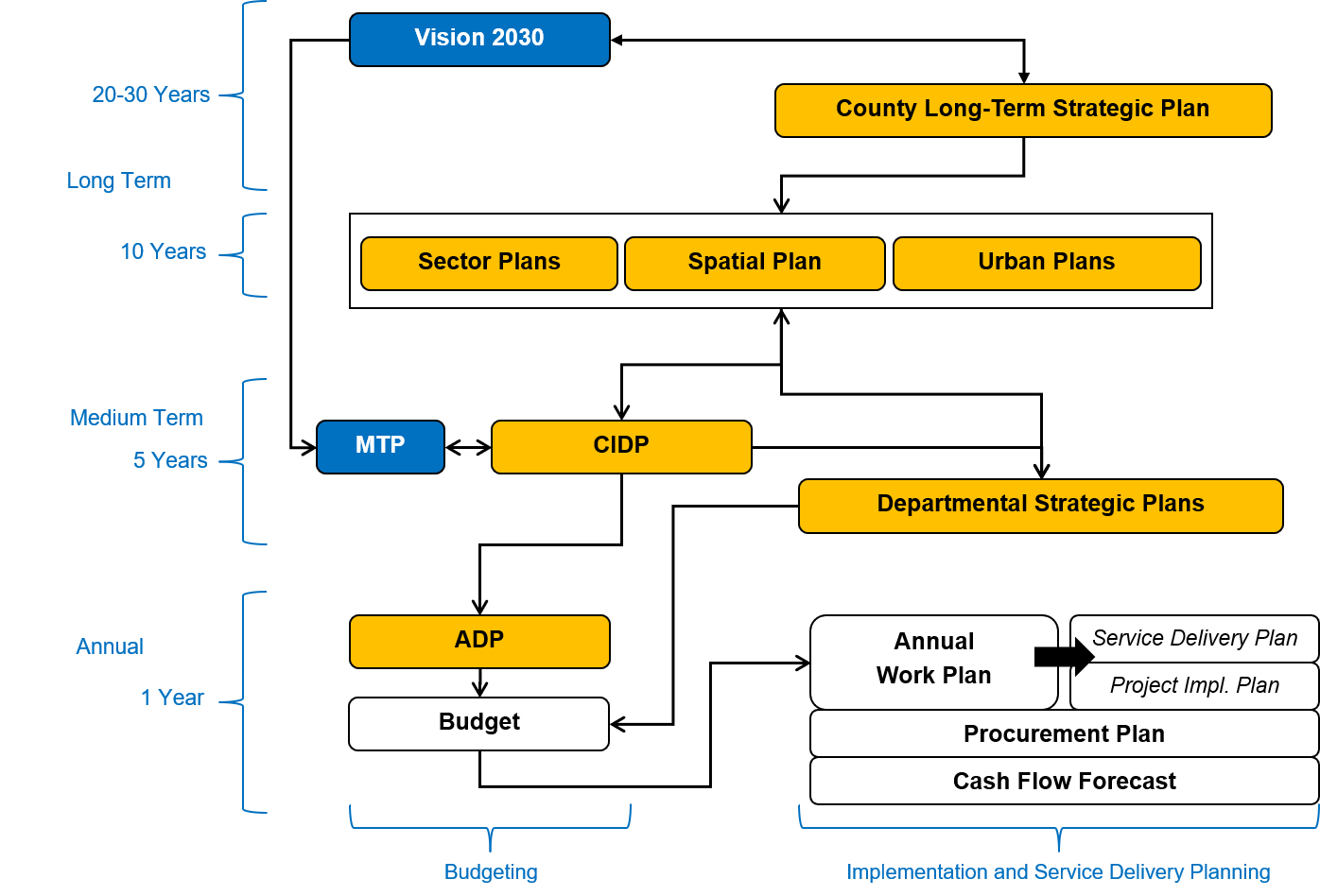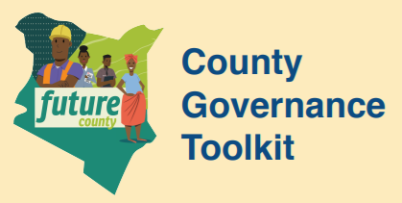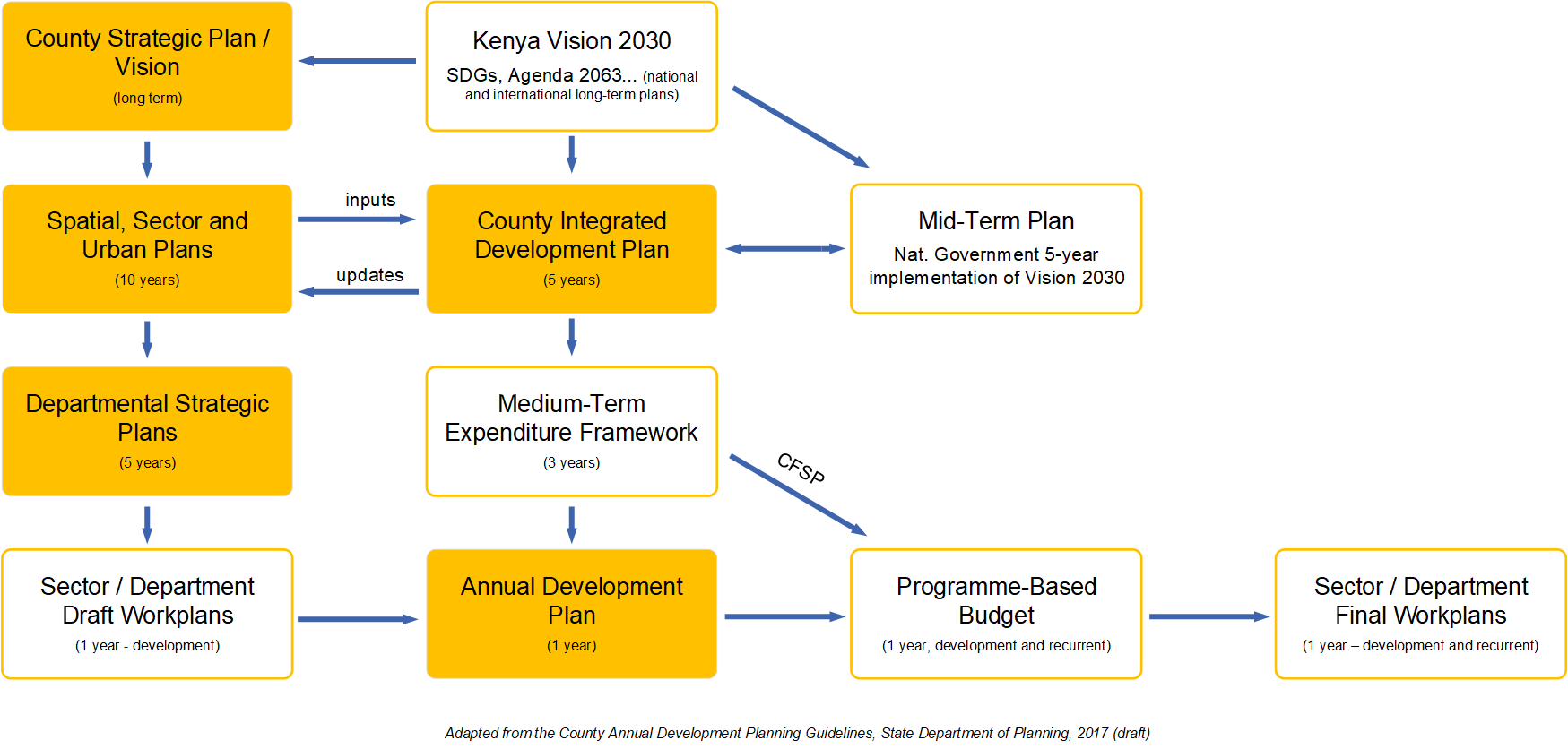Development planning is a public process used for making choices and guiding the allocation of limited resources. It involves an analysis of the current situation, identification of key challenges and setting of priority goals, according to an agreed vision. A good plan outlines the strategies that will bring us closer to our goals; this might combine the adoption of policies and regulatory measures together with government programs that impact people’s lives.
Planning helps translating long term visions into action: to do so, county development planning is designed as a system of interrelated plans with long, medium and short time horizons
| 1 |
Not required by law but adopted by several counties as an apolitical long-term blueprint for the development of the County. This plan should guide the decisions and investments of every actor, not only the County Government
|
4 |
These are ten-year plans for the facilitation and control of development of urban areas, including land use and zoning, building and infrastructure and recreational and general public facilities. They are reviewed and updated every five years in order to inform the new CIDP
|
| 2 |
This is a ten-year GIS-based visual depiction of a county’s socio-economic development vision and program. It is reviewed and updated every five years in order to inform the new CIDP
|
5 |
This is the county’s five-year development plan that brings together (integrates) long-term spatial, sector and city or municipal plans, with inputs from the Governor’s manifesto, national government programs and the public at large.
|
| 3 |
These plans set out the priority goals for each sector, and the programmes needed to achieve them. Each programme details the key outcomes and respective ten-year targets. The plans are reviewed and updated every five years in order to inform the new CIDP.
|
6 |
Once the CIDP is approved and sector plans updated accordingly, each Department breaks down the 5-year targets into yearly increments and revises its internal structure to better implement its programmes.
|
From Long-Term Goals to Service Delivery

Time Horizons of County Development Plans

The County Finance and Economic Planning Department leads county planning. Departments and Non-State Actors participate in these planning processes through Sector Working Groups. Spatial planning, due to its specialized nature, is normally led by the Department responsible for lands, housing and urban planning, while city and municipal plans are prepared under the coordination of the municipal boards with County Executive support. All county plans must be approved by the County Assembly.
The County Assembly plays three vital roles in planning. First, it scrutinizes planning documents tabled by the County Executive through its technical and sector committees to ensure there is consistency and continuity, in terms of priorities, from one plan to the next, and between long-term, medium-term and annual plans. Second, it is expected to ensure that inputs from public participation are reflected in these plans. Third, in a plenary session, it reviews and, if satisfied with the changes or explanations provided by the Executive, it approves the plan.
The citizen’s role in planning is twofold: (a) to provide inputs on emerging priorities, and (b) to hold the county government to account for the decisions and promises made. Citizens can play their role as individuals or as organized groups – participating in public hearings, submitting memos or petitions directly to the leaders of the County Executive and Assembly or through CBEF or SWGs.
- Sector Working Groups (SWGs) allow constant interaction between technical departments and sector stakeholders. They can facilitate the refinement of programmes and outcomes but also set the basis for sector partnerships
- City or Municipal Boards lead, own and oversight City or Municipal Plans, working in conjunction with the County Government (Executive and Assembly)
- County Budget and Economic Forum (CBEF) facilitates high-level discussions on the match between county socio-economic priorities and the county government’s long-term, medium-term and annual plans
- County Commissioner offices and National Government agencies promote well-functioning, two-way communication, cooperation, coordination and collaboration
|
i
|
The County Development Planning framework is well articulated and comprehensive but after 6-7 years of its implementation, it could benefit from a thorough policy review. What overlaps or missing links have emerged between the multiple plans? Are counties keeping up with all the planning mandates or could the system be streamlined to avoid planning fatigue? What happens to development plans when there is a political transition? Ultimately, is the whole system effective at connecting daily spending to long term goals? Waiting for the right opportunity that will bring together all the key institutional stakeholders for an organic review of the county development planning system, you can find here a brief discussion of some of these topics: Brief Review of the County Development Planning Framework |
The diagram below provides a more detailed description of how the county development planning system connects with budgeting and implementation:


